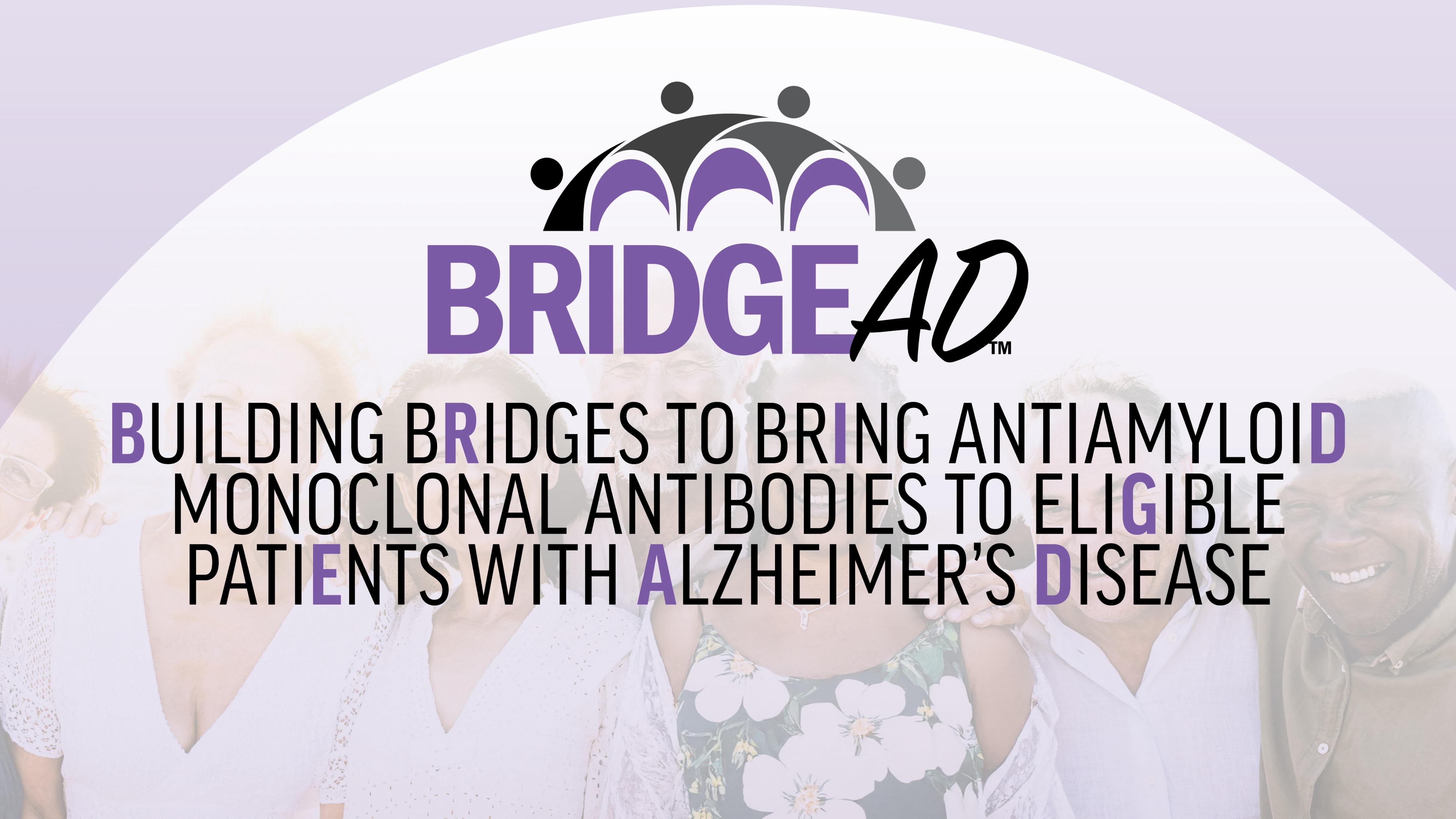





• Targets soluble amyloid β protofibrils and plaques1

• Approved in 20232
• 10 mg/kg administered IV over approximately 1 hour every 2 weeks for 18 months; administration every 4 weeks may be considered after 18 months2
AD, Alzheimer’s disease; IV, intravenously; mAb, monoclonal antibody.


• Targets insoluble N-terminal of amyloid β in plaques3
• Approved in 20244
• 700 mg administered IV over approximately 30 minutes every 4 weeks for the first 3 doses, followed by 1400 mg every 4 weeks4
1. van Dyck CH, et al. N Engl J Med. 2023;388(1):9-21; 2. Leqembi® (lecanemab-irmb). Nutley, NJ; Eisai Inc.; 2025; 3. Sims JR, et al. JAMA. 2023;330(6):512-527; 4. US Food and Drug Administration (FDA). https://www.fda.gov/media/180803/download.

• Patients with MCI due to AD or mild AD1
• AD confirmed by amyloid burden through CSF or amyloid PET1
– 3 tracers available for amyloid PET, each with own set of recommendations2
– Amyloid PET is now covered by Medicare, but not all centers have access3
– CSF may be more accessible1
• Patients and caregivers must be able to come to a nearby infusion center every 2 or 4 weeks, depending on the mAb1,4
• Take psychosocial situation into account

CSF, cerebrospinal fluid; MCI, mild cognitive impairment; PET, positron emission tomography.
1. Cummings J, et al. J Prev Alzheimers Dis. 2023;10(3):362-377; 2. Tian M, et al. Phenomics. 2023;3(4):375-389; 3. Centers for Medicare and Medicaid Services (CMS). https://www.cms.gov/medicare-coverage-database/view/ncacal-decision-memo.aspx?proposed=N&NCAId=308; 4. FDA. https://www.fda.gov/media/180803/download.

Registry Requirements for Antiamyloid mAb Coverage
• Physician and patient information and identification
• Clinical diagnosis of AD or MCI due to AD, including biomarker confirmation, cognitive test results, functional test results, and an optional CDR result
• Baseline MRI to review for presence of ARIA
• Use of concomitant anticoagulants or antiplatelets




• Routine MRIs must be conducted periodically in the first several months of antiamyloid mAb administration1,2








Prior to 1st dose (baseline)
Prior to 5th, 7th, and 14th doses
Consider after 26 doses (1 year)
Prior to 1st dose (baseline)
Prior to 2nd, 3rd, 4th, and 7th doses
• Infusion staff should ask patients about any symptoms since last dose1
• ED staff should be aware that some symptoms of ARIA can mimic TIA or other conditions and should ask patients about antiamyloid mAbs1


Clinician to assess cognition to identify individuals with MCI or mild dementia due to AD




Amyloid PET or LP capability and clinicians to interpret findings


MRI for assessment of cerebrovascular pathology and for monitoring of ARIA; experts to interpret MRI





APOE genotyping resources and expertise to counsel patients on the implications of genotyping

APOE, apolipoprotein E; LP, lumbar puncture. Cummings J, et al. J Prev Alzheimers Dis. 2023;10(3):362-377.

• Infusion settings that can be made available every 2 or 4 weeks to patients receiving therapy
• Knowledgeable staff at infusion sites capable of recognizing and managing infusion reactions
• Checklist for ARIA symptoms prior to infusion
• Communication established between experts interpreting MRIs and treating clinicians
• Communication established between treating clinicians and the patient and care partner

Cummings J, et al. J Prev Alzheimers Dis. 2023;10(3):362-377.

• EMR notes for other clinicians who may encounter patients with ARIA, such as ED clinicians
• Availability of hospital resources, including ICU and MRI
• Protocol with SOPs for management of severe ARIA, including management of seizures and status epilepticus


• Amyloid PET is covered by Medicare1
• Any antiamyloid mAb approved by the FDA through the traditional pathway is covered by Medicare2
– Requires participation in CMS registry
• Proof of MCI or AD diagnosis, including biomarker confirmation, is required
• Factor registry into burden/cost of administration
• CSF may be more accessible than amyloid PET, including for cost3
• May be additional considerations, depending on private insurance

1. Centers for Medicare and Medicaid Services (CMS). https://www.cms.gov/medicare-coverage-database/view/ncacal-decision-memo.aspx?proposed=N&NCAId=308; 2. CMS. https://www.cms.gov/newsroom/fact-sheets/cms-announces-new-details-plan-cover-new-alzheimers-drugs; 3. Cummings J, et al. J Prev Alzheimers Dis. 2023;10(3):362-377. CMS registry available at https://qualitynet.cms.gov/alzheimers-ced-registry
